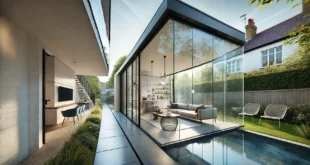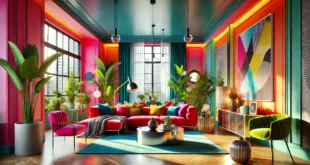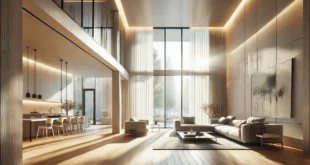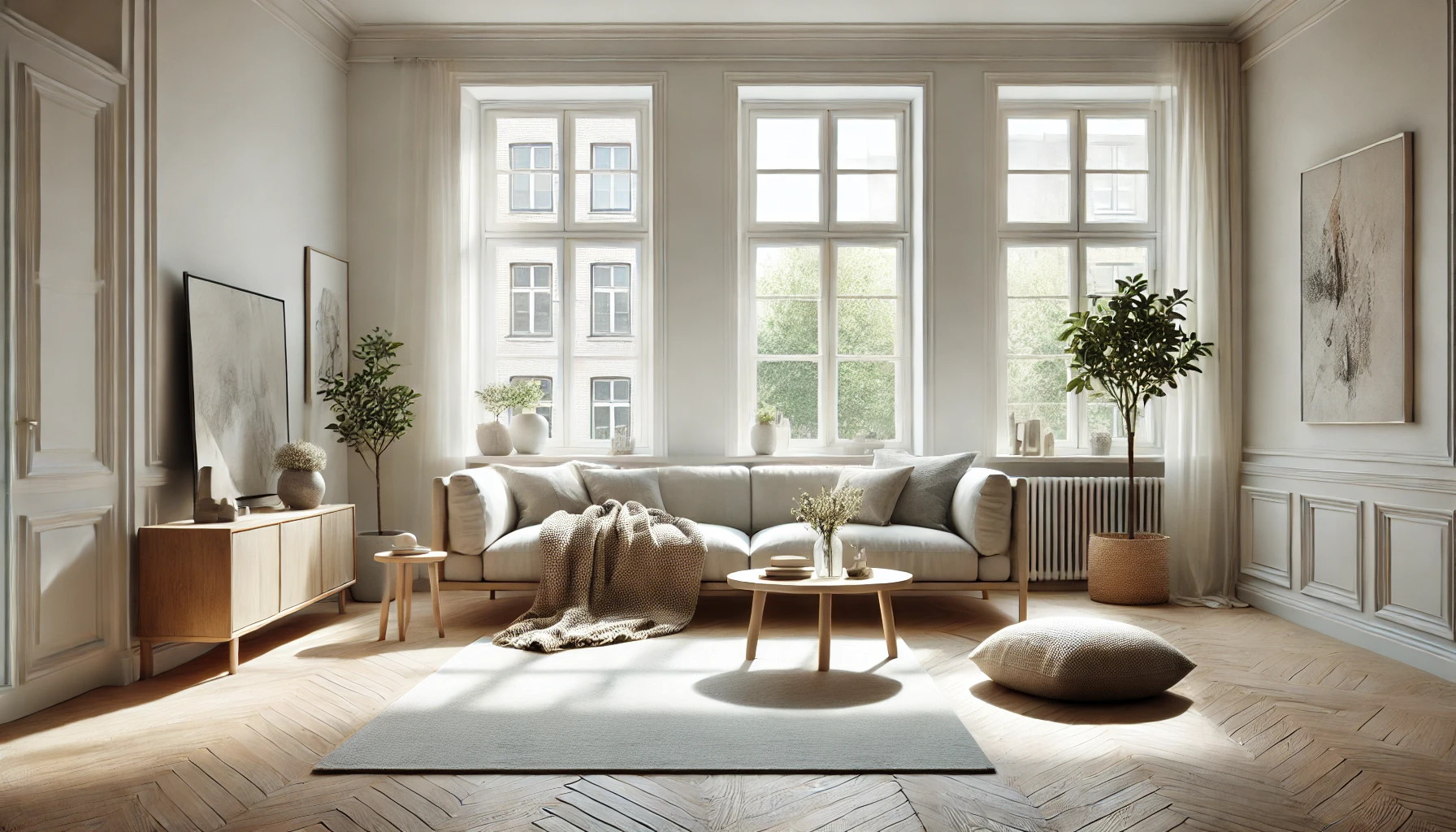
Welcome to the world of Scandinavian home design—a style that has taken the interior design world by storm with its emphasis on simplicity, functionality, and elegance. As a professional home designer, I’ve seen firsthand how Scandinavian design can transform a home into a serene and stylish sanctuary. Whether you’re looking to renovate your home or start from scratch, the principles of Scandinavian design can offer you a timeless, cozy, and practical living space. In this article, we will explore everything you need to know about this design approach, its key elements, and how you can integrate them into your home.
Scandinavian design is not just about aesthetics; it’s about creating a space that is practical, uncluttered, and calming. Originating from countries like Sweden, Denmark, and Norway, Scandinavian home design embraces simplicity and comfort while prioritizing functionality. This design style uses neutral tones, natural materials, and clean lines, creating a look that feels both modern and timeless. Moreover, it places great emphasis on light—both natural and artificial—making homes appear bright and airy, even in the darkest of winters.
In this article, we will delve into the history and core principles of Scandinavian home design. We’ll explore its minimalist appeal, discuss the importance of natural materials, and provide practical tips on how you can bring this style into your home. From cozy textures to sustainable living practices, Scandinavian design has something to offer everyone. Whether you’re a homeowner or an interior design enthusiast, this guide will provide valuable insights into achieving the perfect Scandinavian-inspired home.
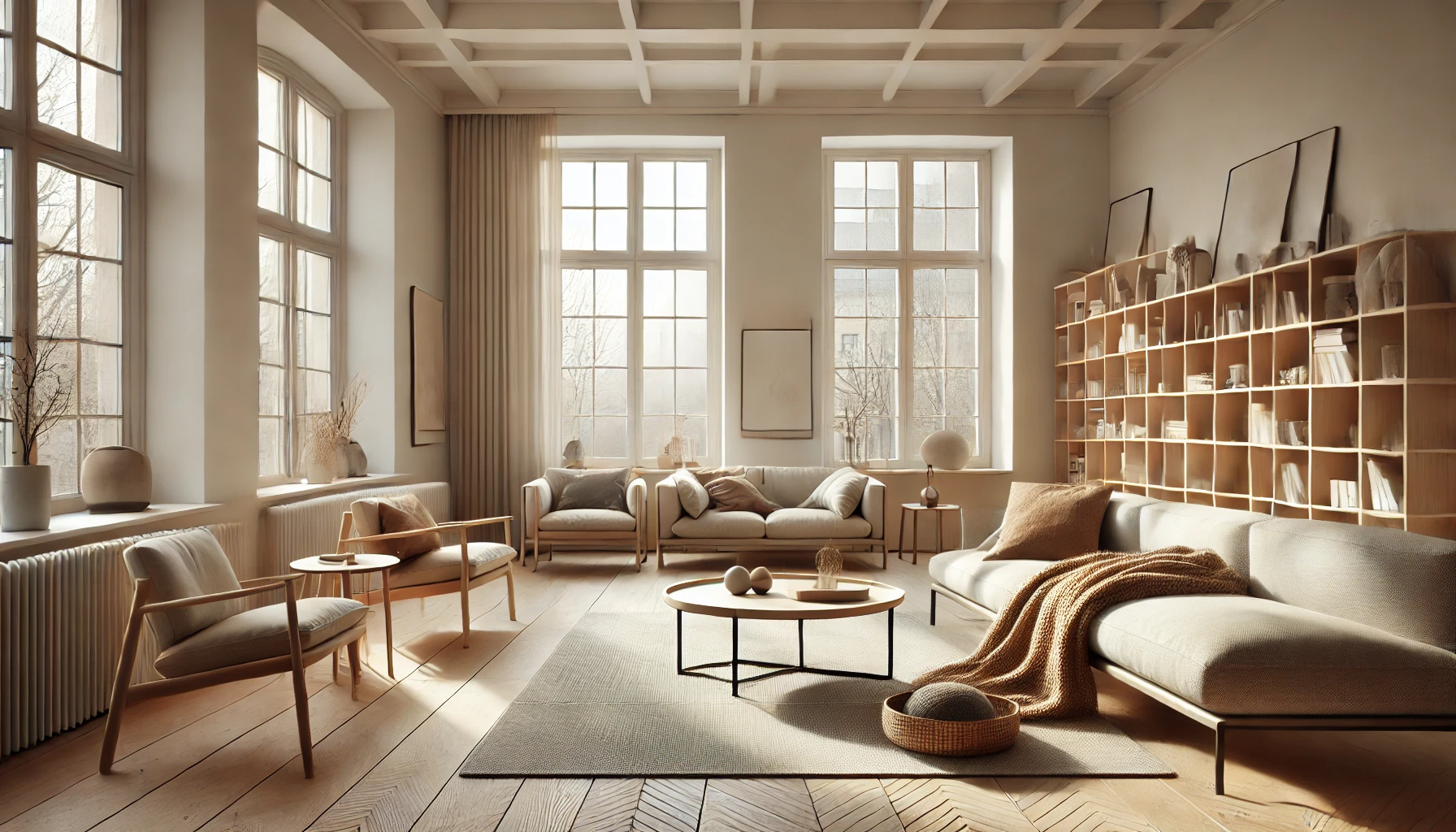
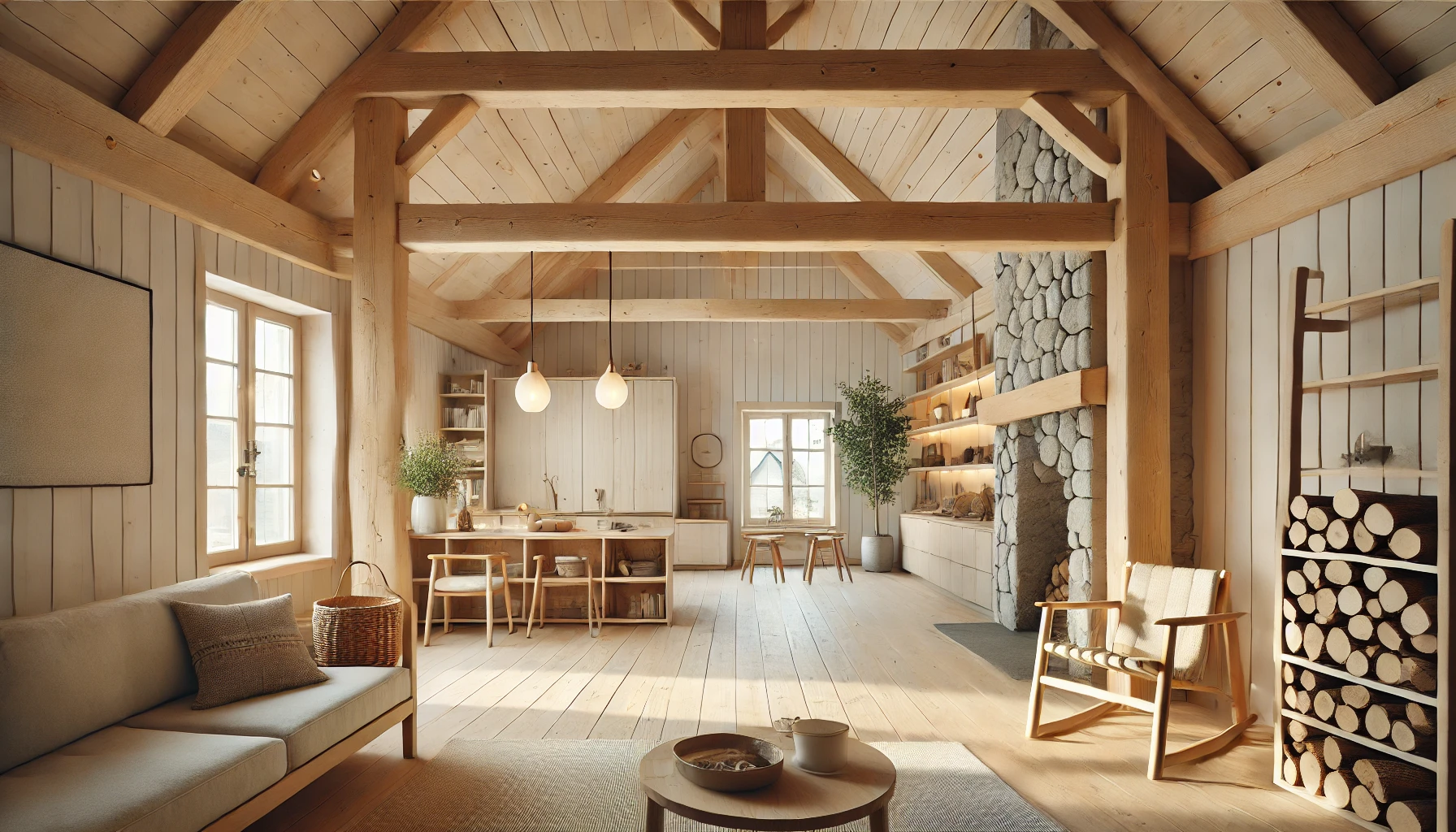
Scandinavian home design originated in the Nordic countries—Denmark, Sweden, Norway, Finland, and Iceland—during the early 20th century. It was part of a broader design movement that sought to create functional, beautiful, and affordable homes for the growing middle class. The harsh northern climates, with their long winters and limited daylight, significantly influenced the design philosophy. Homes were built to maximize natural light, use natural materials, and focus on practicality.
In the post-war era, Scandinavian design gained international recognition, thanks to its minimalist approach and focus on quality craftsmanship. Designers like Alvar Aalto and Arne Jacobsen became household names, contributing to the global popularity of this understated yet sophisticated style. Today, Scandinavian home design remains a timeless favorite for homeowners seeking both comfort and elegance.
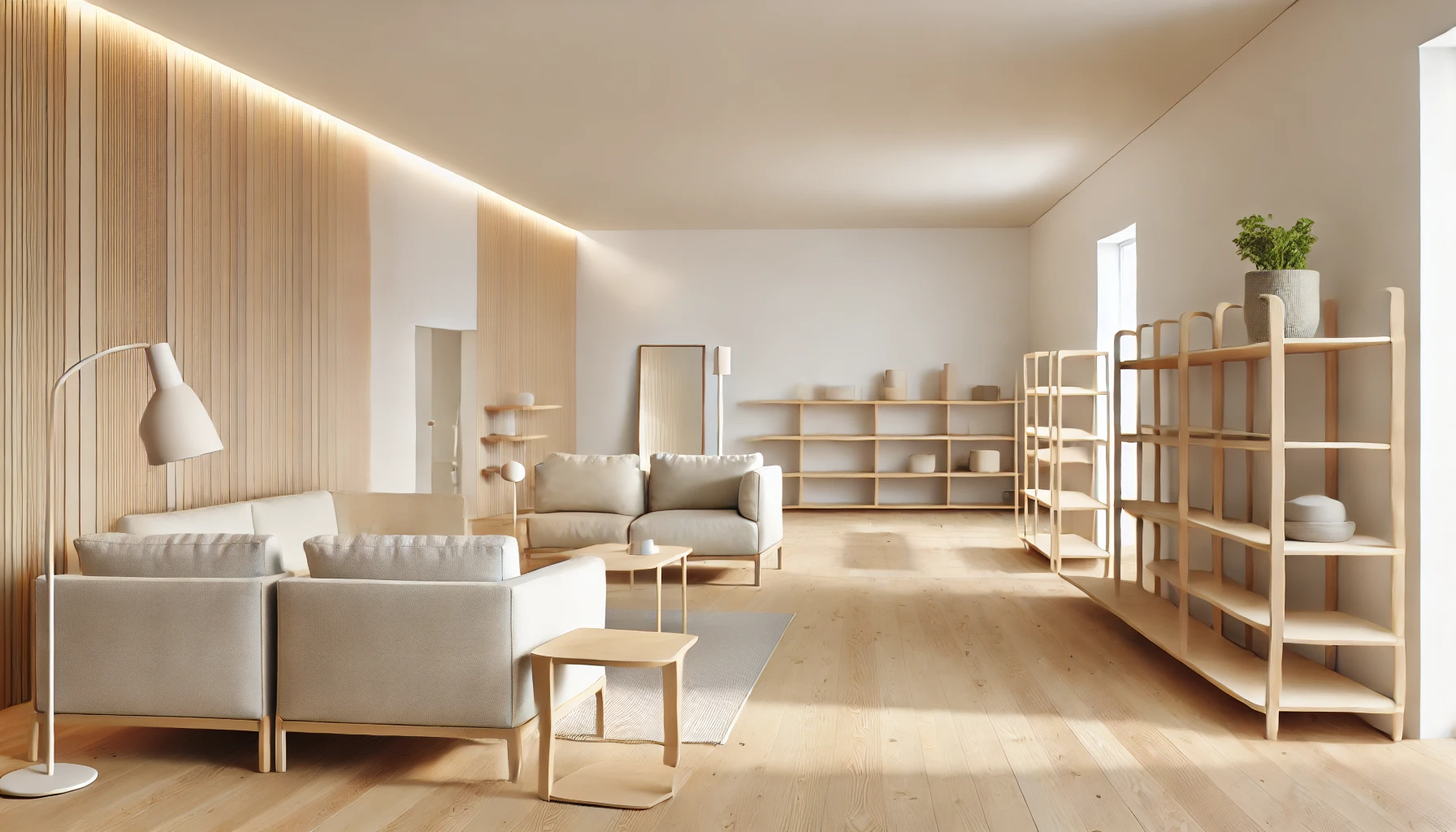
At the heart of Scandinavian design lies simplicity, functionality, and harmony with nature. Scandinavian homes are characterized by clean lines, minimalistic decor, and a color palette dominated by whites, greys, and earthy tones. The focus is always on creating a calm and uncluttered space where every element has a purpose. This means that furniture, decor, and lighting are all carefully chosen to contribute to both the aesthetic and functional aspects of the room.
Natural materials are essential in Scandinavian home design. Wood, wool, leather, and stone are frequently used to create warmth and texture in an otherwise minimalist setting. Sustainability also plays a significant role, with many Scandinavian homes featuring eco-friendly materials and energy-efficient designs. Whether it’s through open layouts, natural light, or functional furniture, Scandinavian design aims to create a home that is not only beautiful but also practical and environmentally friendly.

One of the most defining characteristics of Scandinavian design is its emphasis on light. With limited daylight during the winter months, Scandinavian homes are designed to capture as much natural light as possible. Large windows, light-colored walls, and minimalist window treatments are common features that help brighten up interiors. Even in rooms with limited access to natural light, designers use strategically placed mirrors and reflective surfaces to make the most of available light.
In addition to natural light, artificial lighting plays a critical role in creating the cozy and inviting atmosphere that Scandinavian homes are known for. Layered lighting—comprising ambient, task, and accent lighting—is commonly used to create warmth and depth in a space. Popular lighting fixtures in Scandinavian design include pendant lights, floor lamps, and wall sconces that are both functional and aesthetically pleasing.
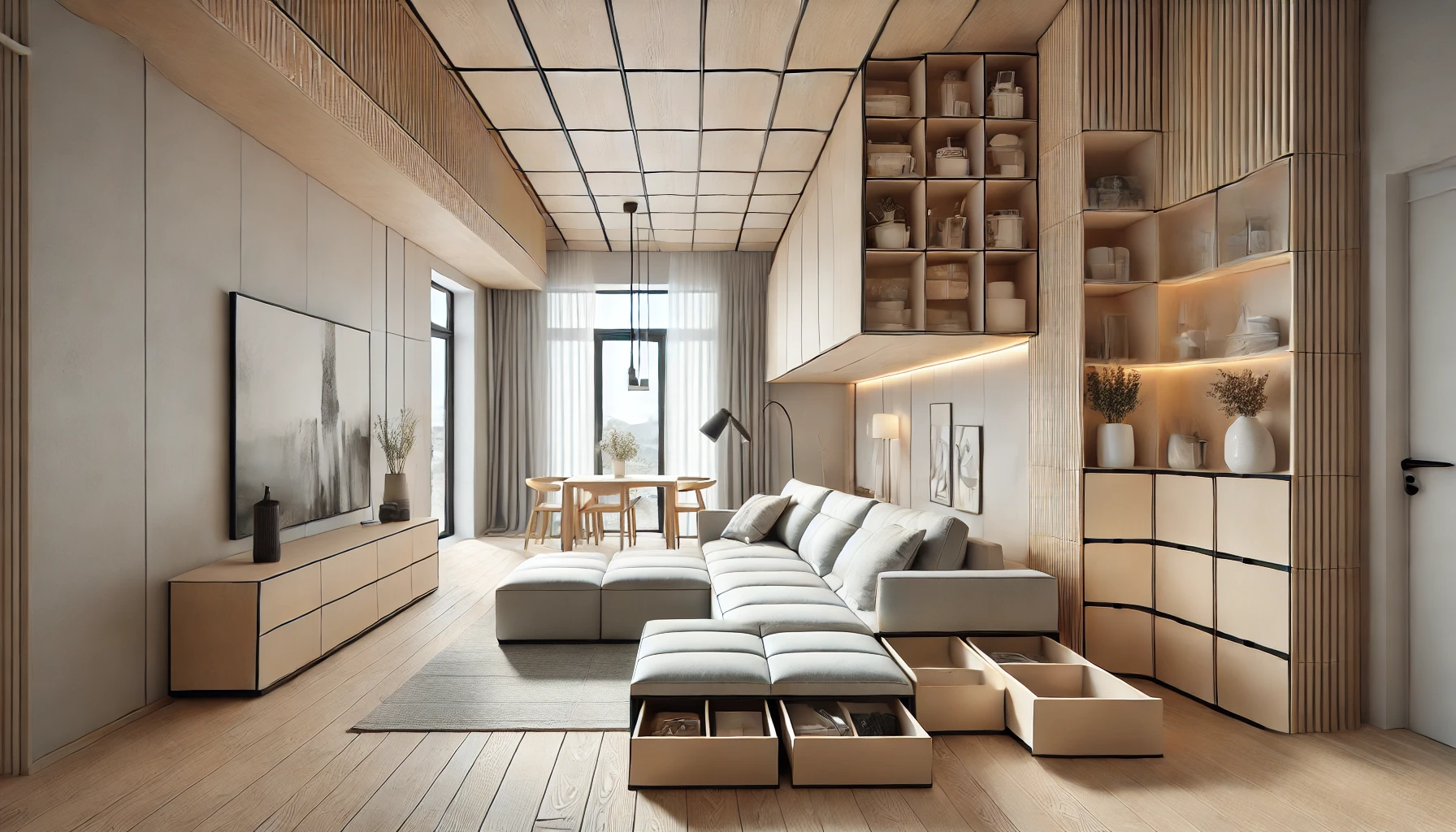
Functionality is a key element of Scandinavian home design. Every piece of furniture and decor serves a purpose, and spaces are designed to be practical and efficient. This focus on functionality doesn’t mean sacrificing style—on the contrary, Scandinavian homes are a perfect blend of beauty and practicality. Multi-functional furniture, such as storage beds and modular shelving, is often used to maximize space without cluttering the room.
In Scandinavian design, less is more. The minimalist approach means that unnecessary items are removed, and the focus is placed on high-quality, functional pieces that enhance the living experience. The result is a space that feels open, airy, and free of distractions, allowing for a more peaceful and harmonious living environment.
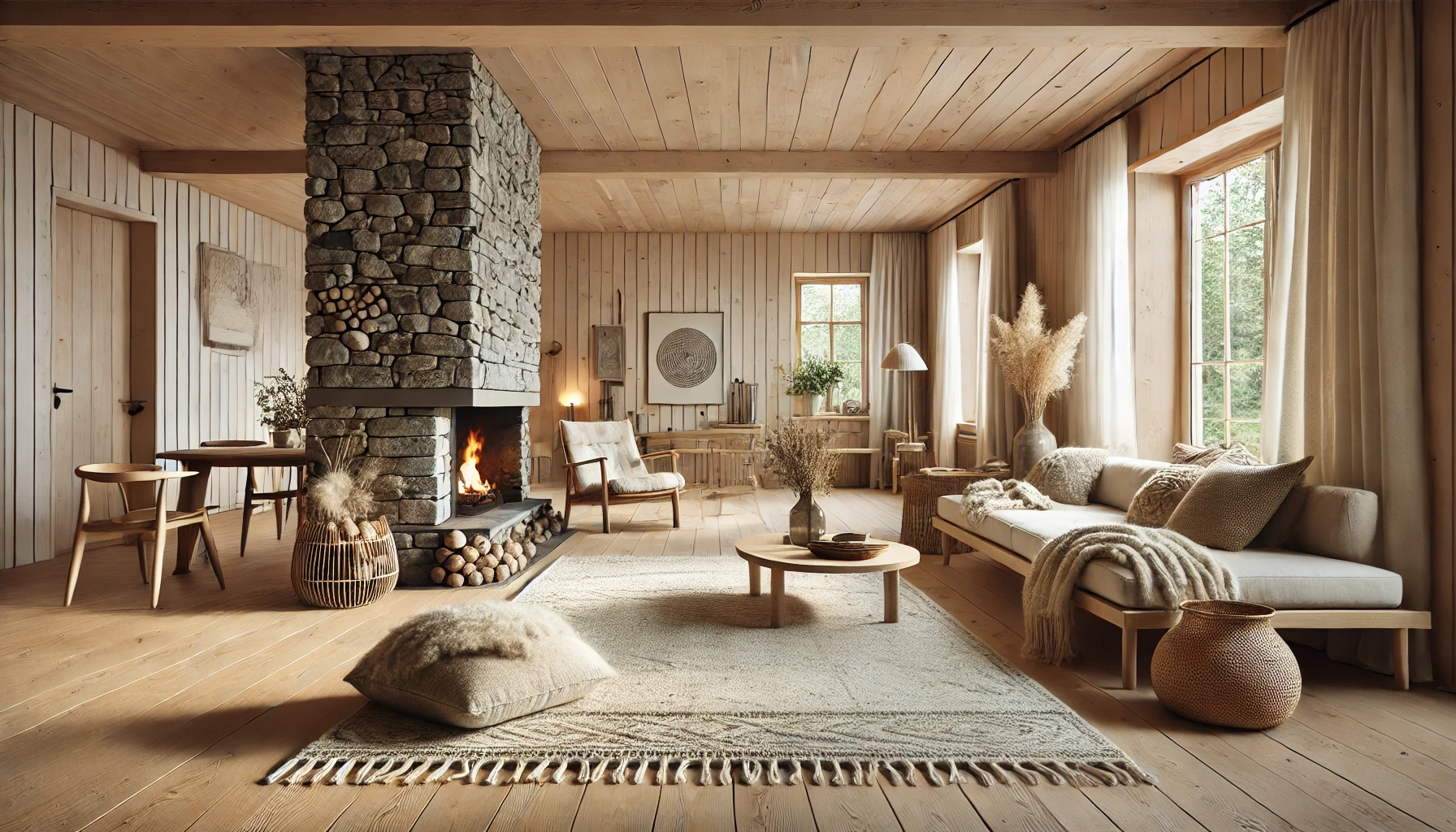
Natural materials are at the core of Scandinavian design. Wood is one of the most widely used materials, often seen in floors, furniture, and even ceilings. Light-colored woods like birch and pine are popular choices, as they help to maintain the bright, airy feel of a room. Stone, wool, leather, and cotton are also commonly used to add texture and warmth to interiors.
Texture is another important aspect of Scandinavian design. While the overall aesthetic is minimalist, the use of different textures helps to create a sense of depth and coziness. Soft wool blankets, sheepskin rugs, and linen cushions are often used to add warmth and comfort to the space. This combination of natural materials and textures creates an inviting environment that is both modern and timeless.
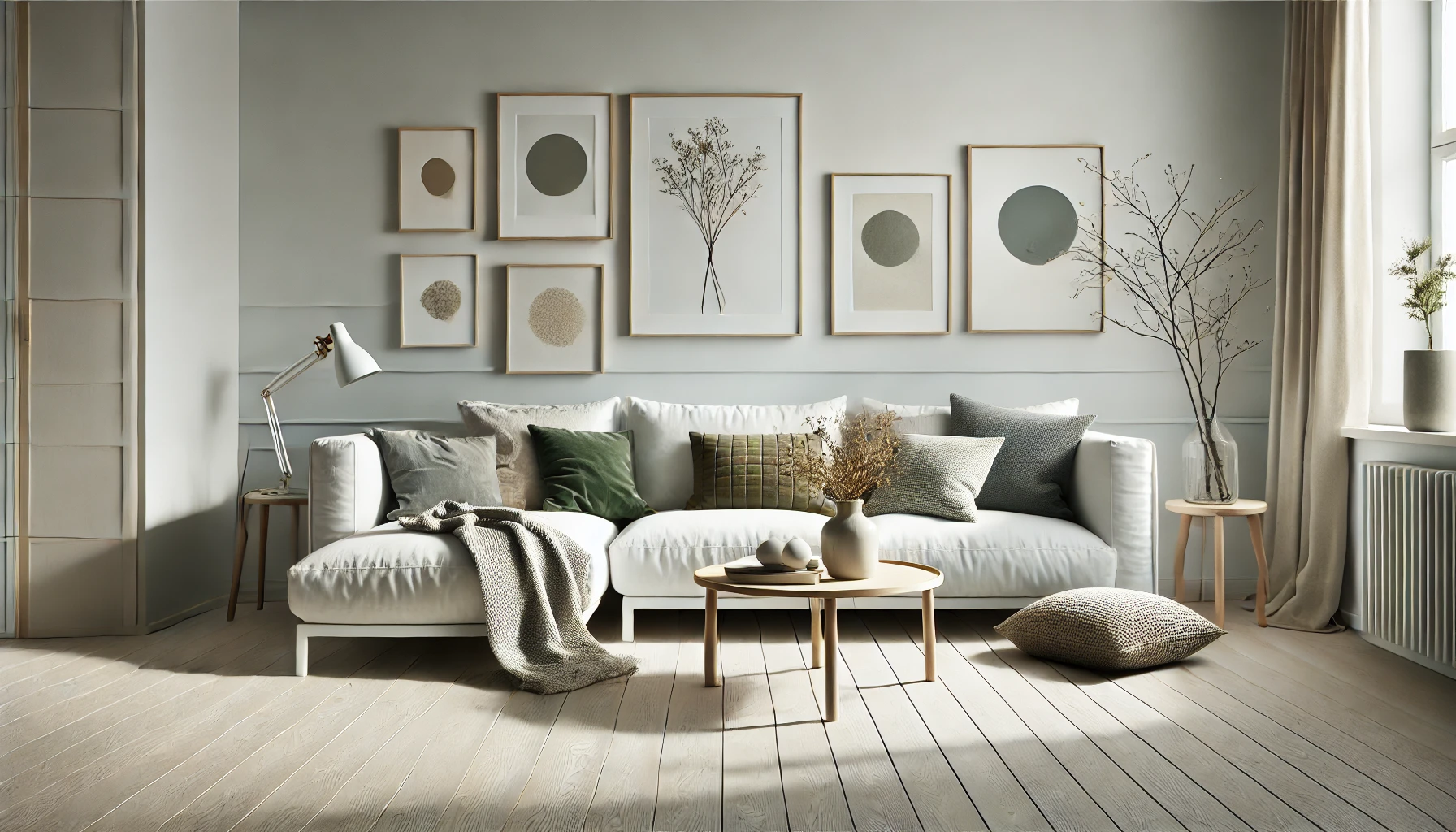
Scandinavian home design is known for its neutral color palette, which typically includes whites, greys, and earthy tones. These colors are chosen to reflect as much light as possible, creating a bright and welcoming atmosphere even in the darkest months of the year. However, this doesn’t mean Scandinavian homes are devoid of color. Subtle pops of color, often inspired by nature, are used to add visual interest without overwhelming the space.
Soft pastels, muted blues, and greens are common accent colors in Scandinavian design. These shades complement the neutral palette and help create a sense of calm and relaxation. Whether through a piece of artwork, a rug, or throw pillows, small bursts of color can be used to add personality and warmth to a room while maintaining the overall minimalist aesthetic.
Timeless Appeal
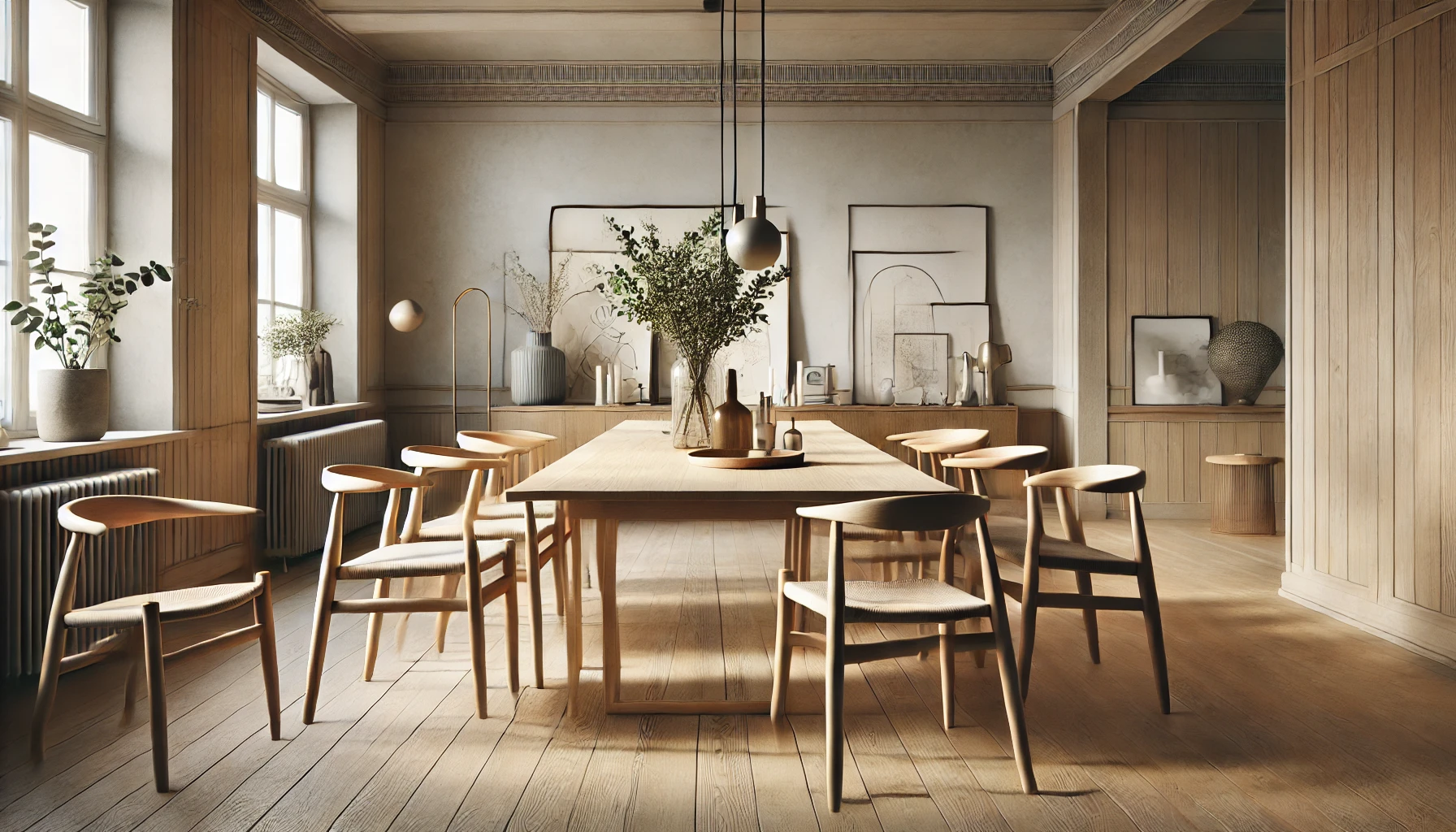
One of the biggest advantages of Scandinavian home design is its timeless appeal. The clean lines, neutral color palette, and focus on functionality ensure that Scandinavian homes never go out of style. Unlike more trendy designs, Scandinavian homes have a classic look that can easily adapt to changing tastes and trends. This makes Scandinavian design a long-term investment for homeowners who want their spaces to remain stylish and relevant for years to come.
Additionally, the emphasis on natural materials and sustainable design practices means that Scandinavian homes are often more eco-friendly than other design styles. This commitment to sustainability not only benefits the environment but also adds to the timelessness of Scandinavian design, as more and more people prioritize eco-conscious living.
Maximized Use of Space
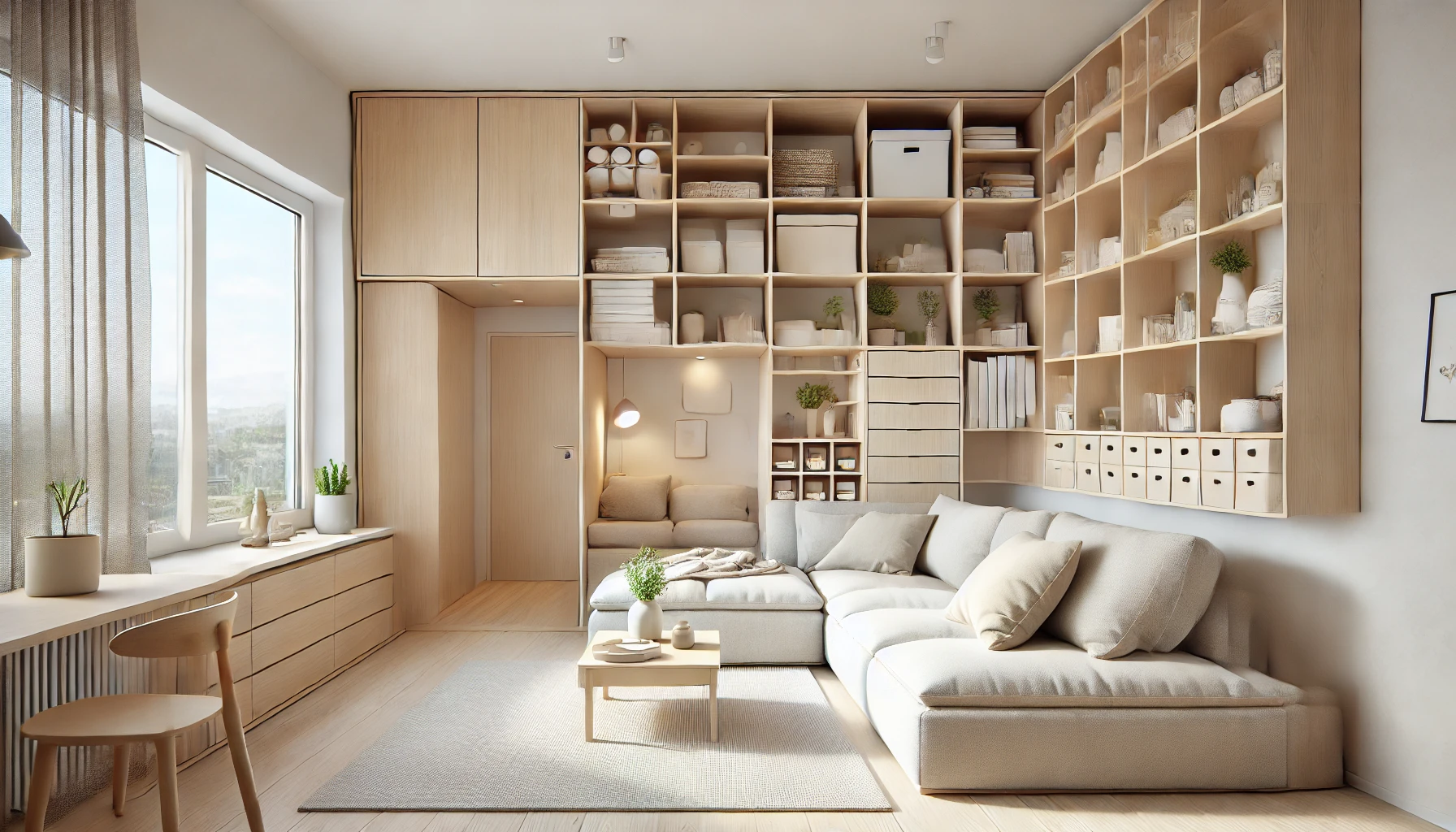
Scandinavian design is perfect for those who want to maximize the use of their space. Its minimalist approach and focus on functionality mean that every square foot of the home is put to good use. This is especially beneficial in smaller homes or apartments where space may be limited. By choosing multi-functional furniture and avoiding unnecessary decor, Scandinavian design can make even the smallest spaces feel open and uncluttered.
Open-plan layouts are common in Scandinavian homes, further enhancing the sense of space. By minimizing barriers between rooms, Scandinavian design creates a more fluid and flexible living environment. Whether you live in a small city apartment or a spacious country home, Scandinavian design principles can help you make the most of your space while maintaining a clean, cohesive look.
Improved Well-Being
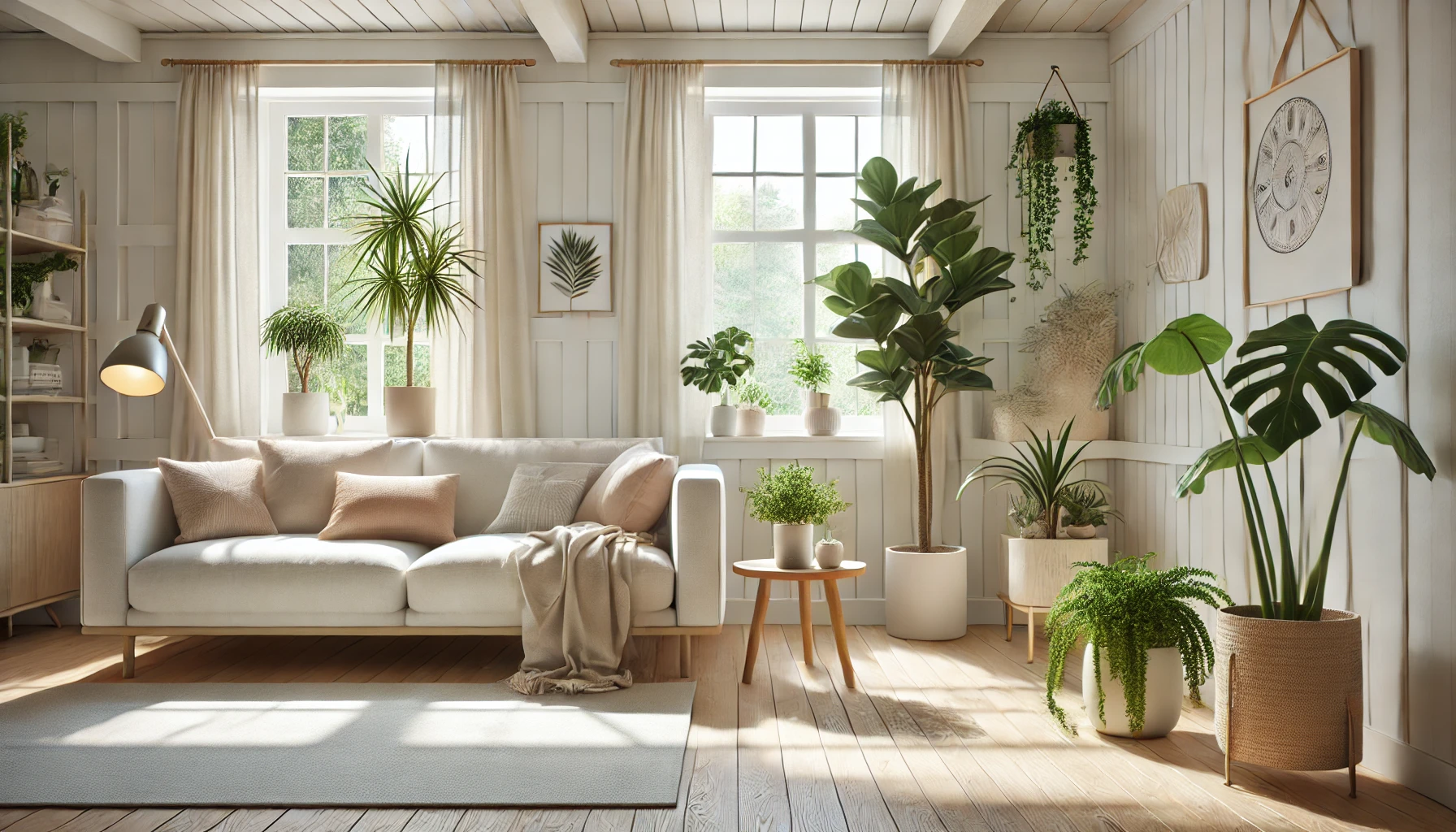
Scandinavian home design prioritizes not just aesthetics, but also the well-being of the occupants. The focus on natural light, natural materials, and uncluttered spaces helps create a calming and peaceful atmosphere. Studies have shown that natural light can improve mood and productivity, while the use of natural materials like wood and stone has been linked to reduced stress levels.
Moreover, the minimalist nature of Scandinavian design encourages a more mindful and intentional way of living. By removing unnecessary clutter and focusing on what truly matters, homeowners can create spaces that promote relaxation and mental clarity. In a world that is often hectic and fast-paced, Scandinavian design offers a retreat where people can recharge and find peace.
Scandinavian home design is characterized by its minimalist aesthetic, focus on functionality, and use of natural materials. The design style prioritizes clean lines, neutral color palettes, and open spaces to create a bright, airy, and clutter-free environment. Natural materials like wood, wool, and leather are commonly used to add warmth and texture to interiors.
To achieve a Scandinavian look in your home, focus on simplicity and functionality. Choose furniture with clean lines and a neutral color palette, and avoid clutter by only incorporating items that serve a purpose. Use natural materials like wood and wool to add warmth and texture, and maximize natural light with large windows and light-colored walls.
The key elements of Scandinavian design include a minimalist approach, the use of natural materials, a neutral color palette, and a focus on functionality. Scandinavian homes often feature large windows to maximize natural light, and multi-functional furniture is commonly used to make the most of the available space. Textures such as wool, leather, and wood add warmth and comfort to the otherwise simple interiors.
Conclusion
In conclusion, Scandinavian home design offers a perfect blend of simplicity, functionality, and elegance. By incorporating clean lines, natural materials, and a neutral color palette, you can create a space that is both stylish and practical. Whether you’re looking to maximize a small space or create a serene retreat in your home, the principles of Scandinavian design can help you achieve your goals.
Thank you for exploring the world of Scandinavian home design with us. We hope this guide has provided valuable insights and inspiration for your next home project. If you’re ready to transform your space into a stylish, functional, and calming sanctuary, we encourage you to embrace the principles of Scandinavian design. With its timeless appeal and focus on well-being, Scandinavian design is the perfect choice for homeowners looking to create a home that truly reflects their values and lifestyle.
 Home Designing Get expert home decor tips and design inspiration at HomeDesigning.blog. Transform your living spaces with trending styles and DIY ideas!
Home Designing Get expert home decor tips and design inspiration at HomeDesigning.blog. Transform your living spaces with trending styles and DIY ideas!
